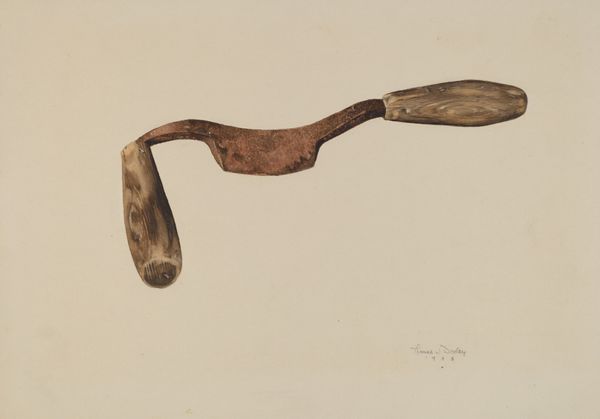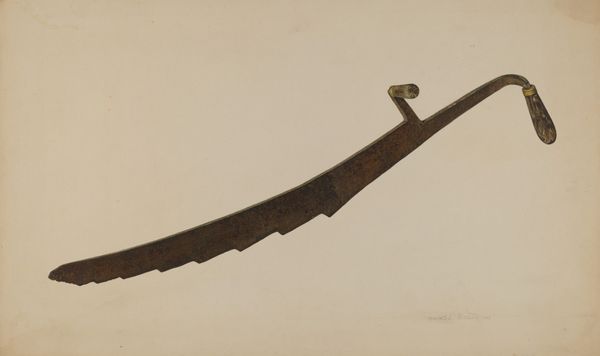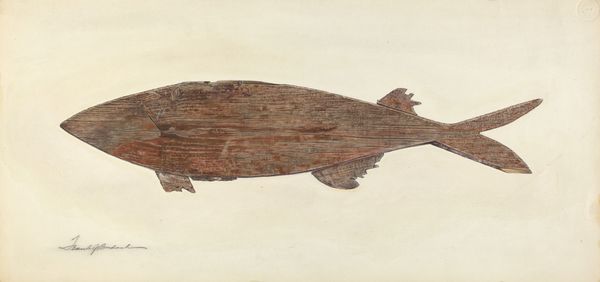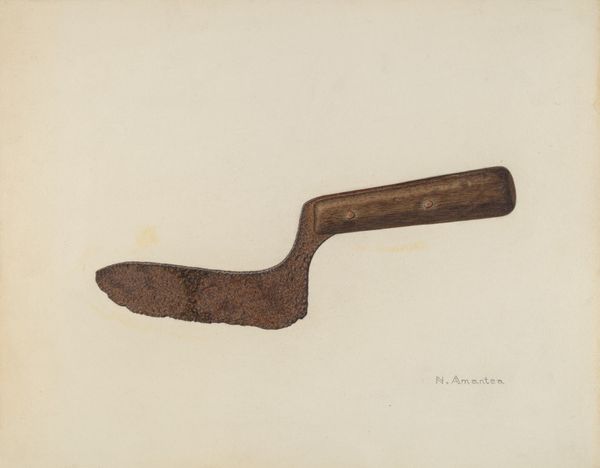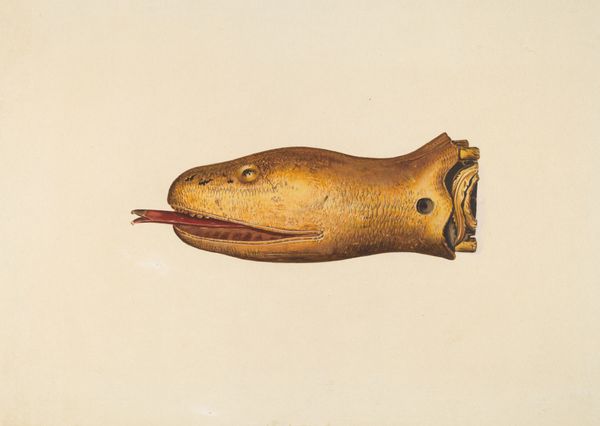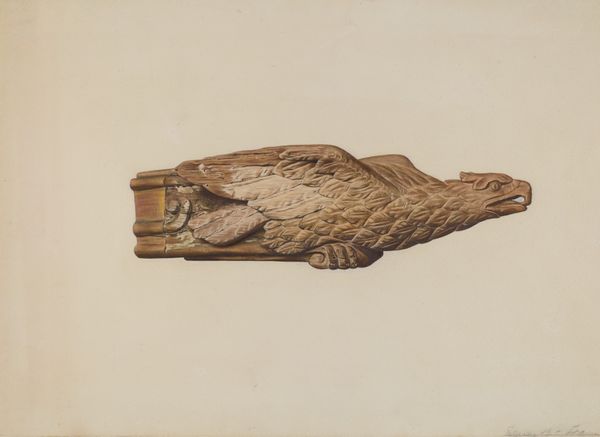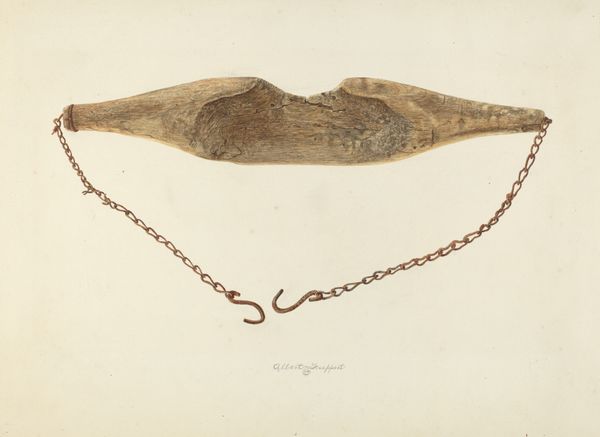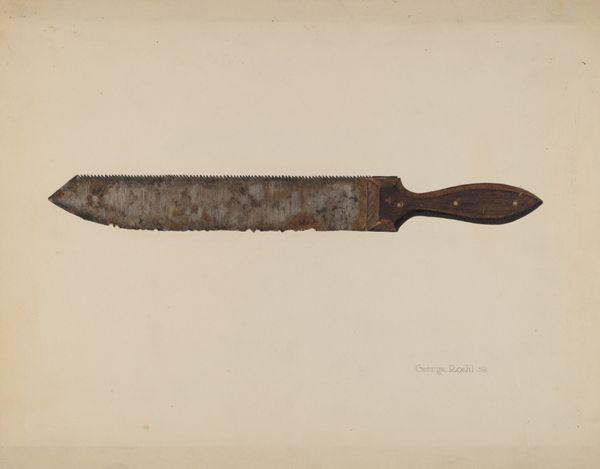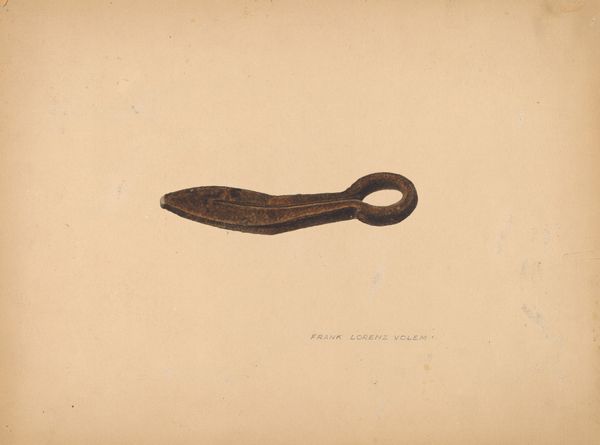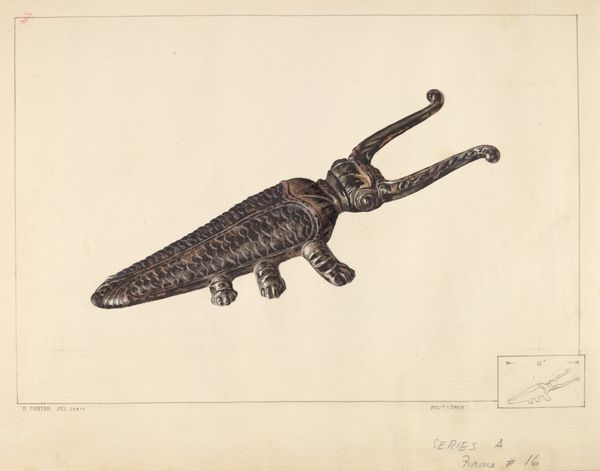
drawing, pencil
#
drawing
#
pencil sketch
#
pencil drawing
#
pencil
#
watercolor
Dimensions: overall: 24.3 x 35.5 cm (9 9/16 x 14 in.) Original IAD Object: 10 1/4" long; 3 5/8" high
Copyright: National Gallery of Art: CC0 1.0
Curator: Look here at Nicholas Amantea’s rendering, dating from about 1940, of a Pennsylvania German axe socket. The medium appears to be pencil and watercolor on paper. Editor: It's compelling. It immediately struck me how earthy the rendering is. The ochre tones create a texture that feels almost topographic, like a miniature rusted landscape. There’s a quiet, contemplative feel about it. Curator: It's fascinating how Amantea has elevated what might be seen as a mundane, utilitarian object. Drawings like this were often made as part of larger efforts to document and preserve cultural artifacts, reflecting anxieties about industrialization and the loss of traditional ways of life. The Index of American Design, for instance, which operated under the WPA during the Great Depression, comes to mind. Editor: Exactly, and that historical context enriches the drawing significantly. Recognizing its place within the cultural preservation movement reframes our understanding. It’s no longer just a rendering of an object, but a document laden with concerns about cultural loss, heritage, and collective memory in times of great socio-economic uncertainty. Curator: Indeed. The work resonates on several levels. There’s a stark contrast between the drawing’s modest scale and the original object’s function: chopping down trees, clearing land—actions often fraught with social implications. The axe has long been tied to the mythology of nation-building, power and masculine strength. By rendering it with such care, the artist seems to ask, what parts of ourselves do we discard, and what do we keep? Editor: Precisely. It prompts us to reflect on whose stories and traditions get prioritized during times of radical transition. Furthermore, that act of documentation almost sanctifies this simple tool. It's no longer just an axe, it's a relic of labor, of heritage. It demands to be recontextualized in contemporary debates around cultural property, identity and belonging. Curator: Well, considering it afresh, it provides a surprisingly nuanced lens. Editor: Yes, offering multiple entry points. It asks critical questions regarding representation, value, and cultural preservation. I am very glad to have engaged with it in such ways today.
Comments
No comments
Be the first to comment and join the conversation on the ultimate creative platform.

